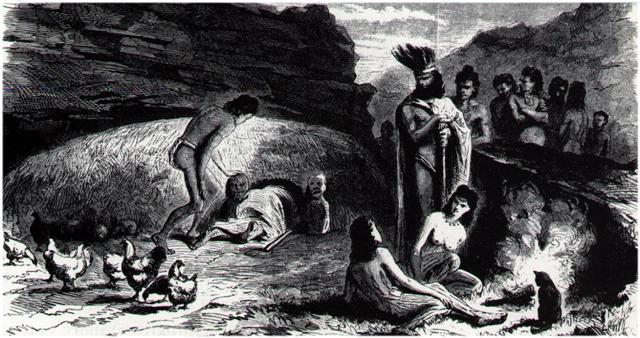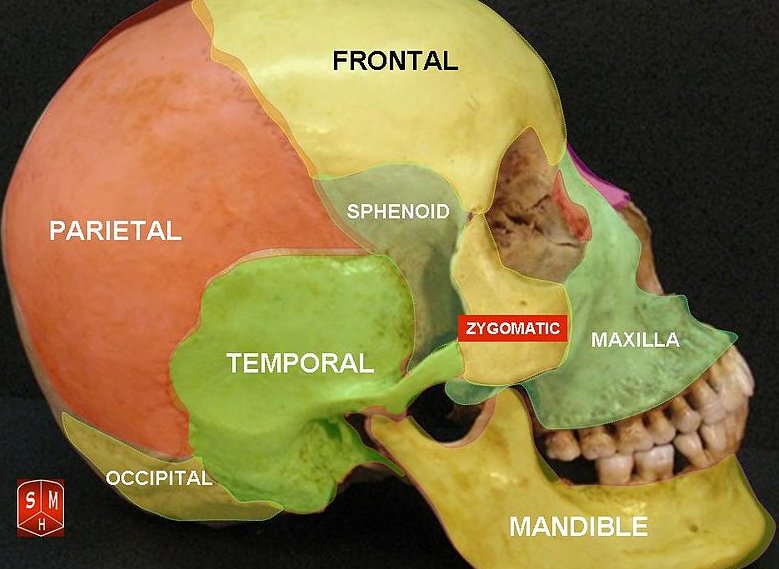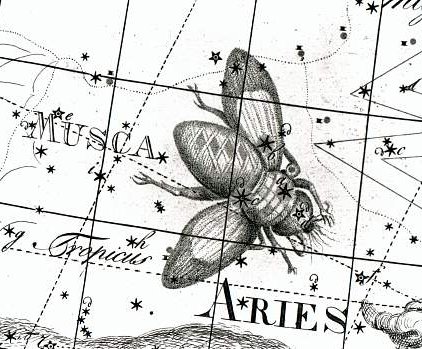Ba4.3
We need the stars close to the Full Moon - where there was an old
woman 'lighting a fire' in her 'earth oven':
... The 'old woman' (nuahine) who
'lights a fire' (ká) in her 'oven' (umu) is
sitting at full moon, personifying the moon:
[Englert 1948, 165:] '... se selia nombrar Ko te Nuahine
káumu à rangi kote kote que significa: La vieja que enciende
el curanto en el cielo kotekote. Puedo haber sido una
personificación de la luna porque las viejos decían, comentando
este nombre, que no es una montaña que seve en la luna, sino una
mujer anciana que está suntada [sentada?] al lado un gran
curanto umu pae (de piedras en circulo)
...
.jpg)
.jpg)
The
English name for number 4 is spelled like the French four (cfr above),
perhaps due to the battle of Hastings.
The B text seems here to be subdivided into weeks:
 |
 |
 |
 |
 |
 |
 |
|
Ba3-31 (118) |
Ba3-32 |
Ba3-33 |
Ba3-34 (121) |
Ba3-35 |
Ba3-36 |
Ba3-37 |
|
ki te tauuru ko te tagata kua oho |
ki te henua |
ko te tagata kua oho |
ki tona agaaga |
e tagata e rae ka hoko |
ki to ou |
|
ι
Crucis (192.2),
β
Muscae (192.5),
MIMOSA =
β
Crucis
(192.9) |
No star
listed (193) |
κ
Crucis (194.4),
ψ
Virginis (194.5),
μ
Crucis,
λ
Crucis (194.6),
ALIOTH (Fat Tail) =
ε
Ursae Majoris,
ι
Oct.
(194.8)
*153.0 = *194.4 - *41.4 |
MINELAUVA =
δ
Virginis
(195.1),
COR
CAROLI = α Canum Ven.
(195.3) |
δ
Muscae (196.5) ,
VINDEMIATRIX (Grape Gatherer) =
ε
Virginis
(196.8) |
13h
(197.8)
ξ¹ Centauri (197.1), ξ² Centauri (197.9) |
APAMI-ATSA (Child of Waters) =
θ
Virginis,
ψ
Hydrae (198.5),
DIADEM = α Com. Ber.
(198.9) |
|
... The low entrances of houses were
guarded by images of wood or of bark cloth, representing
lizards or rarely crayfish. The bark cloth images were
made over frames of reed, and were called manu-uru,
a name given also to kites, masks, and masked people ...
 |
 |
 |
 |
 |
 |
 |
 |
|
Ba4-1
(125) |
Ba4-2 |
Ba4-3 |
Ba4-4 |
Ba4-5 |
Ba4-6 |
Ba4-7 |
|
Kua rere te tagata |
ki to mata - o to
rima |
eko hoko - ki to pepe |
e tagata oho |
ki toona mea |
mai tae hoi ki
te henua kua vari koia |
|
Pepe.
1. A sketch. 2. Bench, chair,
couch, seat, sofa, saddle; here pepe,
mau pepe, to saddle; noho pepe,
a tabouret. Pepepepe, bedstead.
3. Pau.: butterfly. Ta.: pepe,
id. Mq.: pepe, id. Sa.: pepe,
id. Ma.: pepe, a moth;
pepererau, fin, Mgv.: pererau,
wing. Ta.: pereraru, id. Ma.:
parirau, id. Harepepe, kelp.
Here pepe, to saddle. Churchill.
Sa.: pepe, a butterfly, a moth,
to flutter about. Nukuoro, Fu., Niuē,
Uvea, Fotuna, Nuguria, Ta., Mq.:
pepe,
a butterfly. Ma.: pepe,
a grup, a moth; pepepepe,
a butterfly; pepeatua,
a species of butterfly. To.:
bebe, a
butterfly. Vi.: mbèbè,
a butterfly. Rotumā: pep,
id. Churchill 2. Mq.: Pepepepe,
low, flat. Ha.: pepepe, id.
Churchill.
Vari.
1. Menstruation, period
(also: tiko). 2. To tack, to veer
(nautical); ku-vari-mai-á te miro,
the boat arrives, have veered
[around Rano Kau]. Vanaga. About,
circumference, to turn in a circle;
hakavari, pliant, to bend, square;
varivari, about, to go around;
vavari, a garland; varikapau,
circumference, to surround, a compass,
to admire; hiriga varikapau, to
go in a ring; pa varikapau, to
close in; varitakataka (vari-taka
3) to surround. Churchill. Pau.: Vari,
marsh, mire, dirt. Ta.: vari,
dirt, mud. Rar.: vari, mud.
Churchill. Mgv.: Vari, paste well
diluted. Mq.: vaivai, to dilute,
to thin. Ha.: waliwali, soft,
pasty. Churchill. |
|
AL DAFĪRAH (Tuft) =
β
Com. Ber.
(199.4)
*158.0 = *199.4 - *41.4 |
σ Virginis (200.4)
*159.0 = *200.4 - *41.4 |
γ
Hydrae (201.0),
ι
Centauri (201.4)
*160.0 = *201.4 - *41.4 |
Al Simāk-12 (Lofty) /
Chitra-14 (Bright One) /
Horn-1 (Crocodile) /
Sa-Sha-Shirū-20
(Virgin's Girdle) /
ANA-ROTO-3 (Middle pillar)
MIZAR =
ζ
Ursae Majoris (202.4),
SPICA =
α
Virginis,
ALCOR = 80 Ursae Majoris
(202.7)
SADALMELIK (α Aquarii)
*161.0 = *202.4 - *41.4 |
71 VIRGINIS
(203.6) |
No star listed (204) |
HEZE = ζ Virginis
(205.0),
SOUTHERN PINWHEEL GALAXY = M83 Hydrae
(205.7) |
 |
 |
 |
 |
 |
 |
 |
|
Ba4-8
(132) |
Ba4-9 |
Ba4-10 |
Ba4-11 |
Ba4-12 |
Ba4-13 |
Ba4-14 |
|
ki to tama - e
ko manu huki ki to toki |
eko te tagata kua oho |
kua rama - ki to pua |
e tagata aha e
rua mai tae e oho ki te tagata |
tuu i te kihikihi - i
te henua - kua moe - kua hakarao ki tona
tamaiti |
|
Tama.
1. Shoot (of plant), tama
miro, tree shoot; tama tôa,
shoot of sugarcane. 2. Poles, sticks,
rods of a frame. 3. Sun rays. 4. Group
of people travelling in formation. 5. To
listen attentively (with ear, tariga,
as subject, e.g. he tama te tariga);
e-tama rivariva tokorua tariga ki
taaku kî, listen carefully to my
words. Tamahahine, female.
Tamahine (= tamahahine),
female, when speaking of chickens:
moa tamahine, hen. Tamâroa,
male. Vanaga. 1. Child. P Pau.: tama
riki, child. Mgv.: tama, son,
daughter, applied at any age. Mq.:
tama, son, child, young of animals.
Ta.: tama, child. Tamaahine
(tama 1 - ahine),
daughter, female. Tamaiti, child
P Mq.: temeiti, temeii,
young person. Ta.: tamaiti,
child. Tamaroa, boy, male. P
Mgv.: tamaroa, boy, man, male.
Mq.: tamaóa, boy. Ta.: tamaroa,
id. 2. To align. Churchill. In the
Polynesian this [tama na, father
in the Efaté language] is distinguished
from táma child by the accent
tamā or
by the addition of a final syllable
which automatically secures the same
incidence of the accent, tamái,
tamana
... Churchill 2. |
|
CLOSE
TO THE FULL MOON: |
|
ε Centauri (206.3), κ Oct. (206.4)
*165.0 = *206.4 - *41.4 |
No star listed (207) |
τ
Bootis (208.2),
BENETNASH (Leader of the Daughters of
the Bier) =
η
Ursae Majoris
(208.5),
ν
Centauri (208.7),
μ
Centauri,
υ
Bootis (208.8) |
No star listed (209) |
MUPHRID (Solitary Star) = η Bootis
(210.1), ζ Centauri (210.3) |
φ Centauri (211.0), υ¹ Centauri (211.1),
υ² Centauri (211.8), τ Virginis (211.9) |
AGENA (At the Knee) =
β
Centauri
(212.1),
θ
Apodis (212.5),
THUBAN (Dragon) =
α
Draconis
(212.8) |
|
Oct 13 |
14 |
15 (288) |
16 |
17 |
18 |
19 (292) |
|
"Sept 2 (245) |
3 |
4 |
5 (248) |
6 |
7 |
8 (251) |
|
CLOSE
TO THE SUN: |
|
4-13 |
14 (104) |
15 (288 - 183) |
16 |
17 (107) |
18 |
April 19 |
|
ACHERNAR (End of the River) = α Eridani
(23.3),
χ
Andromedae (23.6),
τ
Andromedae (23.9) |
ALSEIPH (Scimitar) =
φ
Persei
(24.5),
τ
Ceti (24.7) |
No star listed (25) |
ANA-NIA-10 (Pillar-to-fish by)
χ Ceti (26.1),
POLARIS = α Ursae Minoris,
BATEN KAITOS = ζ Ceti
(26.6),
METALLAH = α Trianguli
(26.9) |
Al Sharatain-1 /
Ashvini-1 /
Bond-16 (Dog) /
Mahrū-sha-rishu-ku-1 (Front of the Head
of Ku)
SEGIN =
ε
Cassiopeia, MESARTHIM =
γ
Arietis,
ψ
Phoenicis (27.2),
SHERATAN (Pair of Signs) =
β
Arietis,
φ
Phoenicis (27.4)
*351.0 = *27.4 - *41.4 |
ι Arietis (28.0), λ Arietis (28.2), υ
Ceti (28.8) |
ALRISHA (The Knot) = α Piscium, χ Phoenicis (29.2),
ε Trianguli (29.4),
ALAMAK
(Caracal) = γ Andromedae
(29.7)
*353.0 = *29.4 - *41.4 |
Remember my rule of thumb to add
200 to the current right ascension days of the
Full Moon in order to reach to the corresponding day number at the
time of the Bull?
For instance: 200 + *212 (Thuban)
= 412 = 476 - 64. I.e., the current day number
should be 264 (= 200 + 64) + *212 (Thuban) = 476. Although April 19
(109) = 476 - 367. Because the cycle of my right ascension
days is slightly longer than the 364 + 1 days needed
for the Gregorian year. And 367 = 364 + 3 = 210 +
264 - 107 (April 17), where 210 + 264 = 474 = 2 *
237 (8 * 29½) = 6 * 79 (spring equinox).
Alrisha (*29) + 264 = 293 is not far from the
expected 292 (October 19) for Thuban. And similarly *29 + 200 = 229 (AUGUST
17) → SEPTEMBER
2 (229 + 16 = 245). This was 20 days before the equinox,
245 + 20 = 265.
According to the Era of Bharani the star κ Octantis (*206.4)
- currently at the Full Moon in April 13 - would have been
positioned at *206.4 - *41.4 = *165.0
= "September 2 (245
= 286 - 41).
And by interpolation we could find that 365
+ *23 (Achernar) = 388 = 223 + *165 should be the solution to the
problem of how to convert current right ascension nights
into day numbers in the Era of Bharani:
|
BULL |
BHARANI |
RONGORONGO |
|
200 |
223 (= 264 - 41) |
264 |
But things (mea) will
then become
hazy. Because day 388 = 365 + *23 = 365 + 80 + 23 = 365 + 103 = 103
= March 3 would correspond to day 103 - 41 = 62 = "March 3 = *23
+ 39 (instead of *23 + 41).
|
Achernar (*23) |
"March 3 (23 + 39 = 62) |
|
κ Octantis (*206.4) |
"Sept 2 (245 = 62 +
183) |
This murkery (Swedish mörker means darkness) exercise should be remembered when trying to explain the peculiar list in Manuscript
E where the expected number 41 for
variants of water taro
stolen by the Occiput (Teke)
has been changed into 39.
|
Te Taka-pau |
39 variants of uhi - STOLEN by Teke from his
brother Ma'eha [E:58-64] |
|
 |
18 |
 |
13 |
 |
7 |
 |
|
SIRRA H
(*0) |
ADHIL
(*19) |
MIRA
(*33) |
BHARANI
(*41) |
|
ALCHITA
(*183) |
SPICA
(*202) |
KHAMBALIA
(*216) |
ZUBEN
ELGENUBI (*224) |
|
0h |
39 (= 3*
13) |
 |
Bharani was 41 Arietis, rising with the Sun in May 1, and in
the preceding day (April 30) the Sun was rising with
39 Arietis.

... From a religious point of view, the
high regard for flies, whose increase or reduction causes a
similar increase or reduction in the size of the human
population, is interesting, even more so because swarms of
flies are often a real nuisance on Easter Island, something
most visitors have commented on in vivid language. The
explanation seems to be that there is a parallel
relationship between flies and human souls, in this case,
the souls of the unborn. There is a widespread belief
throughout Polynesia that insects are the embodiment of
numinous beings, such as gods or the spirits of the dead,
and this concept extends into Southeast Asia, where insects
are seen as the embodiment of the soul
...
And then the date
Hora Nui 2
(presumably "September 2) should be recalled, because here
Manuscript E has placed an important event:
...
Hotu's canoe sailed from Maori to Te Pito O
Te Kainga. It sailed on the second day of September (hora
nui) ... [E:74] →
*74 (Haedus I)
... For six days (po ono), mats (moenga) were
taken on board the canoe (i.e., the loading of the canoe
took six nights) ...

|
.jpg)
.jpg)


















